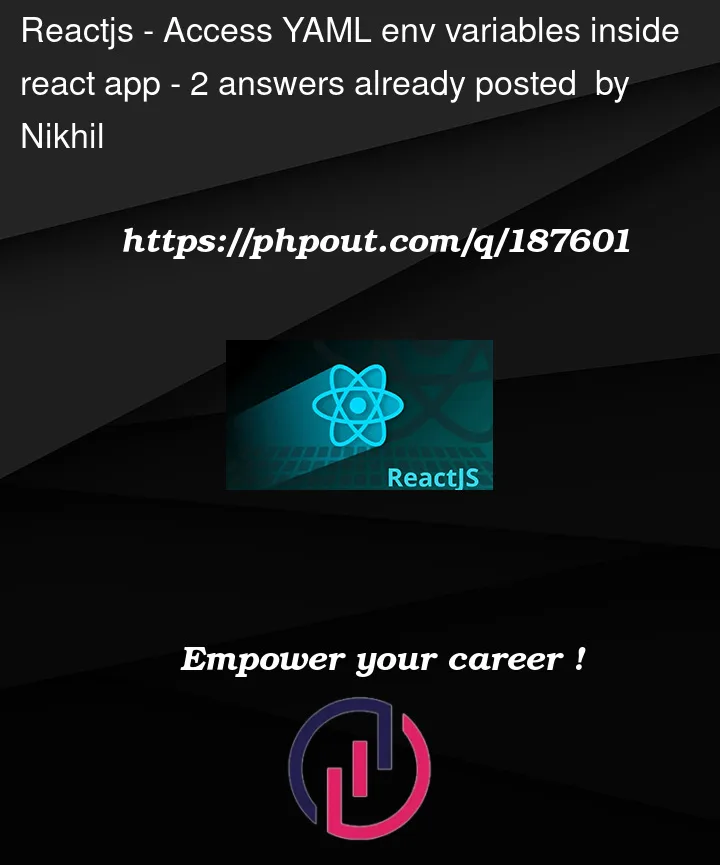I am working on a react app which will be deployed in 3 environments.
Dev/QA and Prod.
Devops team has provided me a YAML file with the environment variables and asked us to use those variables in our application.
Sample YAML –
---
apiVersion: apps/v1
labels:
app: kubesphere
component: ui-dev
tier: frontend
name: ui-dev
namespace: Test Project
spec:
matchLabels:
app: kubesphere
component: ui-dev
tier: frontend
template:
metadata:
labels:
app: kubesphere
component: ui-dev
tier: frontend
spec:
containers:
- env:
- name: BACKEND_URL
value: http://192.40.84.98:5656
image: $REGISTRY/$HARBOR_NAMESPACE/$APP_NAME:$IMAGE_VERSION-$BUILD_NUMBER
imagePullPolicy: Always
And the variables we have to access are BACKEND_URL.
I am using these in our app as – process.env.BACKEND_URL but it isn’t working.
Is there something I am missing? Please guide.




2
Answers
You can’t access the
process.envfrom the client javascript (the browser) in this case it is react. so even if the container has that env variable, javascript doesn’t have access to it.the way react works with env variables is that react read them from an
.envfile and then in the build react took those variables and keep them as javascript code.In your case the image (the react app) is already built, so simply it cannot
access to those env variables in your container ..
You have to mount a file like config.js which contains the environment variables, and reference it in the public.html.
1-) Yaml must be something like this. (you may need the change mountPath accordingly, in this example I used nginx)
2-) In index.html file (which is inside the public folder of react app), you have to give reference to this config.js file in head block.
3-) You can now access the environment variables inside a component like this: